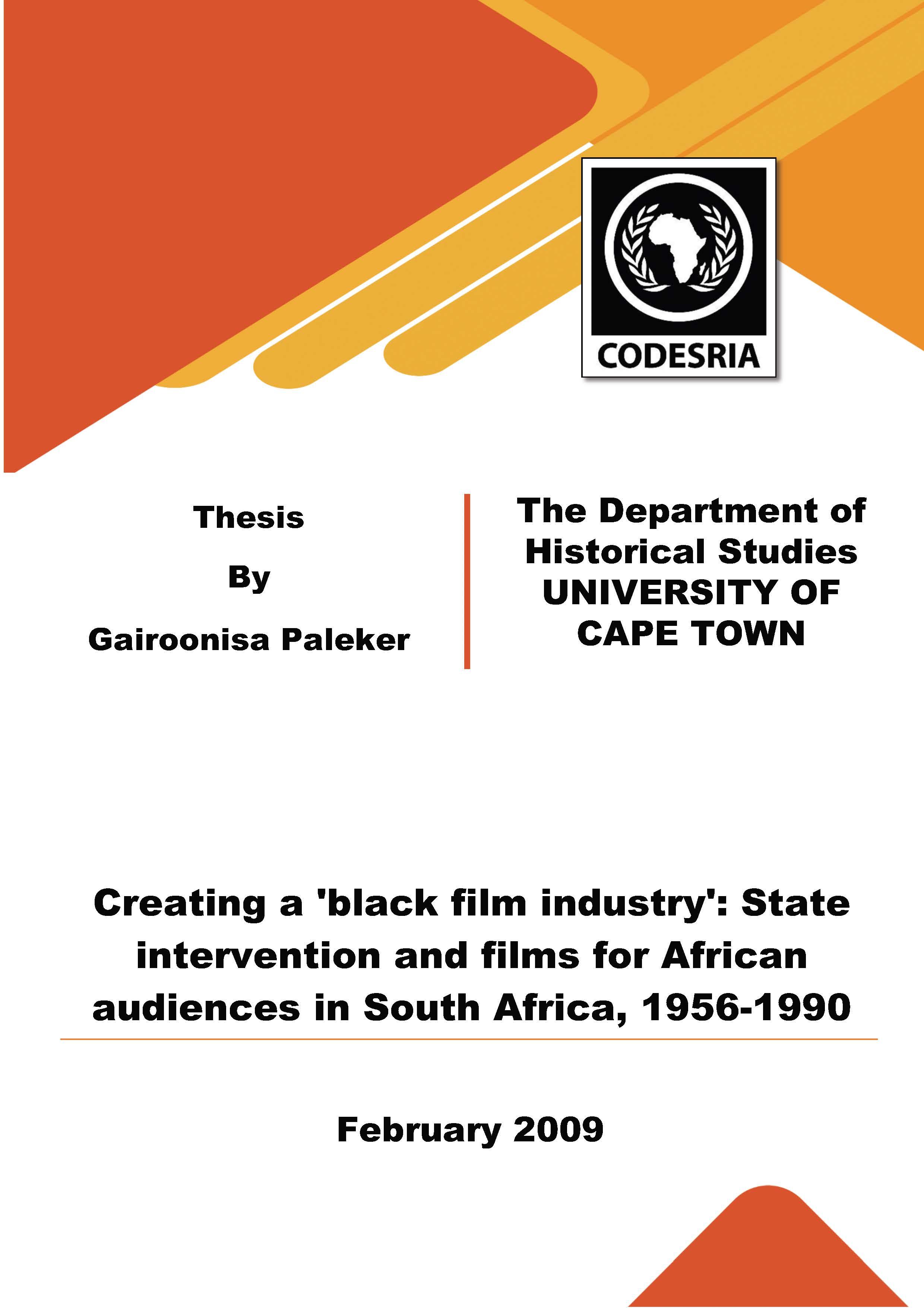Creating a 'black film industry': State intervention and films for African audiences in South Africa, 1956-1990
Mots-clés :
'black film industry', films, African audiences, South AfricaSynopsis
This thesis examines one aspect of cinema in South Africa, namely, the historical construction of a 'black film industry' and the development of a 'black' cinema viewing audience. It does so by focusing on films produced specifically for an African audience using astate subsidy. This subsidy was introduced in 1972 and was separate from the general or A-Scheme subsidy that was introduced in 1956 for the production ofEnglish- and Afrikaans-language or 'white' films. This thesis is a critical assessment of the actual film products that the B-Scheme produced. The films are analysed within the broader political, economic and social context of their production and exhibition. The films are used as historical sources for the way in which African identities were constructed. Through critical analyses of the selected films, the thesis examines the manner in which African people, culture, gender and family relations, as well as class and/or political aspirations were . represented in film. Africans had very little opportunity or power to represent themselves and wherè this had been possible, it was within the ideological and political boundaries set by the apartheid govemment.
The central argument is that state intervention in films for Africans has remained constant since colonial tule. The degree and forms of intervention have varied over the years, but the state - whether colonial, segregationist or apartheid - has played an important interventionist role in the. development of a 'black film industry' and film viewing culture among Africans. This interventionist role has been guided and informed by political exigencies throughout the period of this study.
The interventionist role of the state has also impacted negatively on the organic emergence of an indigenous African film industry and film culture. These have instead been shaped by political, economic and social forces exerted by those in political power. Given the unique racial segregation of South African society and the oppressive nature of apartheid rule, opposition to this cultural manipulation has been limited.
Téléchargements
Références
SAB NTS 9479 16/400 (35), Confidential Memorandum from the Department of Native Affairs, 24 April 1950.
TAB 78/1/4, Letter from Jamie Uys to the Department oflnformation, 26 January 1957.
SAB HEN 590 78/1/4, Letter from the Commercial Advisor to the Accountant of the Treasury, 16 September 1959.
SAB HEN 590 78/1/4, "Persverklaring
SAB HEN 590 78/1/4, Letter from R Roper of S. A. Film Studios to the Secretary, Board of Trade and Industries, 25 March 1963.
SAB HEN 590 78/1/4, A copy of the newsletter The Bulletin, l November 1962.
KAB PAS 3/58, Letter from the Branch Manager of African Films Limited to Acting Administrator, 5 September 1929.
KPT 2/2/26, Letters from Mr. Nicholson to the Native Commissioner, 17 March 1931.
KPT 2/2/26, Letter from the Secretary for Native Affairs to the Native Commissioner in Potgietersrust, 17 April 1931.
KAB 3/CT 4/1/9/1/122, Letter from Mr. Breek and Mr. Rooseboom to the Cape Town Clerk, 10 October 1930.






